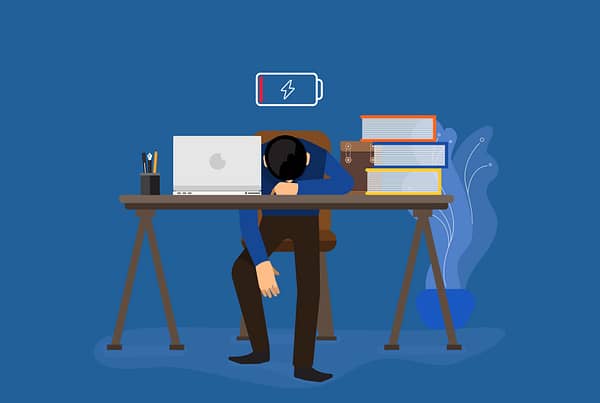Yesterday, we highlighted the $10.7 billion software problem in physical therapy, caused by bad software, leading to indefensible documentation and bad billing processes. Today, we give you five tips to improve your physical therapy documentation. We focus on tips that will help drive higher revenue.
Documentation Tip #1 – Create functional, measurable treatment goals
With carriers focused on objective measures and shifting towards value-based care, it is crucial to write functional, measurable treatment goals.
“The most common cause of claim denial in physical therapy is poorly documented treatment goals,” a biller said. “Your goal must be measurable and impact the patients daily life to be defensible and justify continued skilled treatment.”
Examples
Bad: Improve right shoulder range of motion – 6 weeks
Good: Improve right shoulder flexion range of motion by 20% to allow patient to reach into kitchen cabinets – 6 weeks
Bad: Patient will perform 20 6″ step-ups in 60 seconds – 4 weeks
Good: Patient will perform 20 6″ step-ups in 60 seconds w/ pain < 2 to allow patient to go up and down stairs in their home – 4 weeks
Documentation Tip #2 – Take objective measurements more frequently
We get it. Taking objective measures and documenting them visit over visit may not have any benefit as the patients measurements may be identical. However, increasing the frequency that you take objective measurements will accomplish two things.
Get paid
First, it will improve your ability to justify continued treatment and get paid for your services.
We’ve been told by billers that “Documenting improvements in objective measures is crucial to get paid,” and “Great subjective documentation means nothing if you can’t back it up with clear objective progress.”
Retain patients
Second, increasing the frequency of your objective measurements will allow you to prove your value to your patient and get them to continue going to therapy. As we highlighted previously, only 3 out of 10 patients complete their entire course of care. Additionally, 59.7% of the patients that stopped early said they would continue going to therapy if they recognized improvement.
Well, what better way to prove progress in a patient than showing them objective progress week-over-week? One patient mentioned this inability to see progress visually as his primary concern with physical therapy.
“I went week after week, paying a $30 copay every visit and the therapist had no way of showing me if I progressed,” the patient said. “He would tell me my range of motion increased, but I wanted to see it visually and he couldn’t do it, so I stopped going to therapy.”
Increasing the frequency you take objective measurements and demonstrating that progress to patients will accomplish two things. First, it will improve your ability to get paid on each visit you provide, and second, it will increase your customer retention and average visits per patient per case.
Documentation Tip #3 – Clearly track and demonstrate progress on the flowsheet
Treat patients
One of the most common problems in physical therapy documentation is illegible flowsheets. This causes three issues. First, it impacts your ability to treat patients. A physical therapist assistant at Edge Physical Therapy and Sports Medicine noted the issues with paper flowsheets.
“I tried to treat patients and go off the doctors flowsheets, but often, they were illegible and I had to waste time finding the therapist and asking them what they wanted me to do,” he said.
Get paid
Secondly, illegible flowsheets can cause claim denial. When reviewed for medical necessity, the insurance carrier can deny payment if they cannot read the flowsheet, or force you to spend time rewriting the flowsheet and appealing the claim.
“I see it quite often where I get a claim denial due to an illegible flowsheet,” a biller said. “It is such a simple problem to fix, but unfortunately the existing physical therapy EMR software doesn’t provide an easy-to-use electronic flowsheet.”
Retain patients
Finally, illegible, paper flowsheets make it impossible to demonstrate progress to patients, which we previously mentioned impacts retention.
Dr. Lawrence Kim, owner and therapist at Edge Physical Therapy and Sports Medicine, talked about this issue with paper flowsheets.
“One of the biggest problems we have is that we cannot use our flowsheet to show a patient how much they progressed,” he said. “An electronic flowsheet that is easy-to-use would be a valuable tool to help us get paid but also help us retain patients longer.”
Documentation Tip #4 – Document on the same day you treat
Completing your notes on the same day you treat the patient can go a long way towards creating defensible documentation. You can complete the majority of your documentation while you treat the patient. The ideal practice is to have the patient fill in his/her chief complaint, primary concern, and pain levels for the day. As the therapist, you review that information and also complete objective documentation during the course of the visit. Shortly following the visit or by the end of the day, complete your assessment based off of that information and track your progress towards the treatment goals.
“Having the ability to complete notes while treating a patient would be huge for therapists,” a biller said. “Often, the notes I receive from therapists don’t meet the mark because they fail to complete them until days later. It makes winning appeals difficult.”
Using this practice will help you create defensible documentation that is accurate and save you from getting behind on your notes, which prevents you from submitting claims and getting paid.
“I wish I had a system that allowed the patient to complete their subjective analysis at the start of the visit,” Dr. Kim said. “It is best practice to put the subjective analysis in the patients own words, but none of the existing software enables me to do that.”
Documentation Tip #5 – Clearly document progress
A classic mistake in physical therapy documentation is to not clearly show a patients progress. It is not enough on each visit to simply update your assessment, change a few words, and sign the note. Each visit you must clearly document the progress your patient has made towards his objective goals. Here are some examples of good documentation to demonstrate progress:
Examples:
Good: “PT has improved right shoulder flexion by 4% week-over-week and is able to reach into kitchen cabinets w/ pain level of 4 compared to a 7 last week. We continue to perform exercises as stated in our flowsheet to improve range of motion and overall strength to increase ability to perform ADLs.”
Good: “PT can now perform 12 6″ step-ups in 60 seconds w/ pain at level 4 compared to last week, where they could perform 10 6″ step-ups with pain at level 6. Continuing treatment as stated in flowsheet to build up leg strength to enable patient to return to ADLs w/o pain.”
Prompt EMR & Practice Management – A fully-integrated, physical therapy software platform
Prompt EMR was designed and developed with these documentation tips, along with many others, in mind. Dr. Rick Daigle of Too Far North Fitness discussed how Prompt has helped him implement these tips.
“Prompt EMR has made it extremely easy to document on the fly in a defensible way,” he said. “The electronic flowsheet is a game-changer and extremely easy to use and the click-based system enables me to quickly record objective measures. Additionally, the system structures your goal creation so that it is quick and easy to create objective goals that relate to the patients daily life.”




